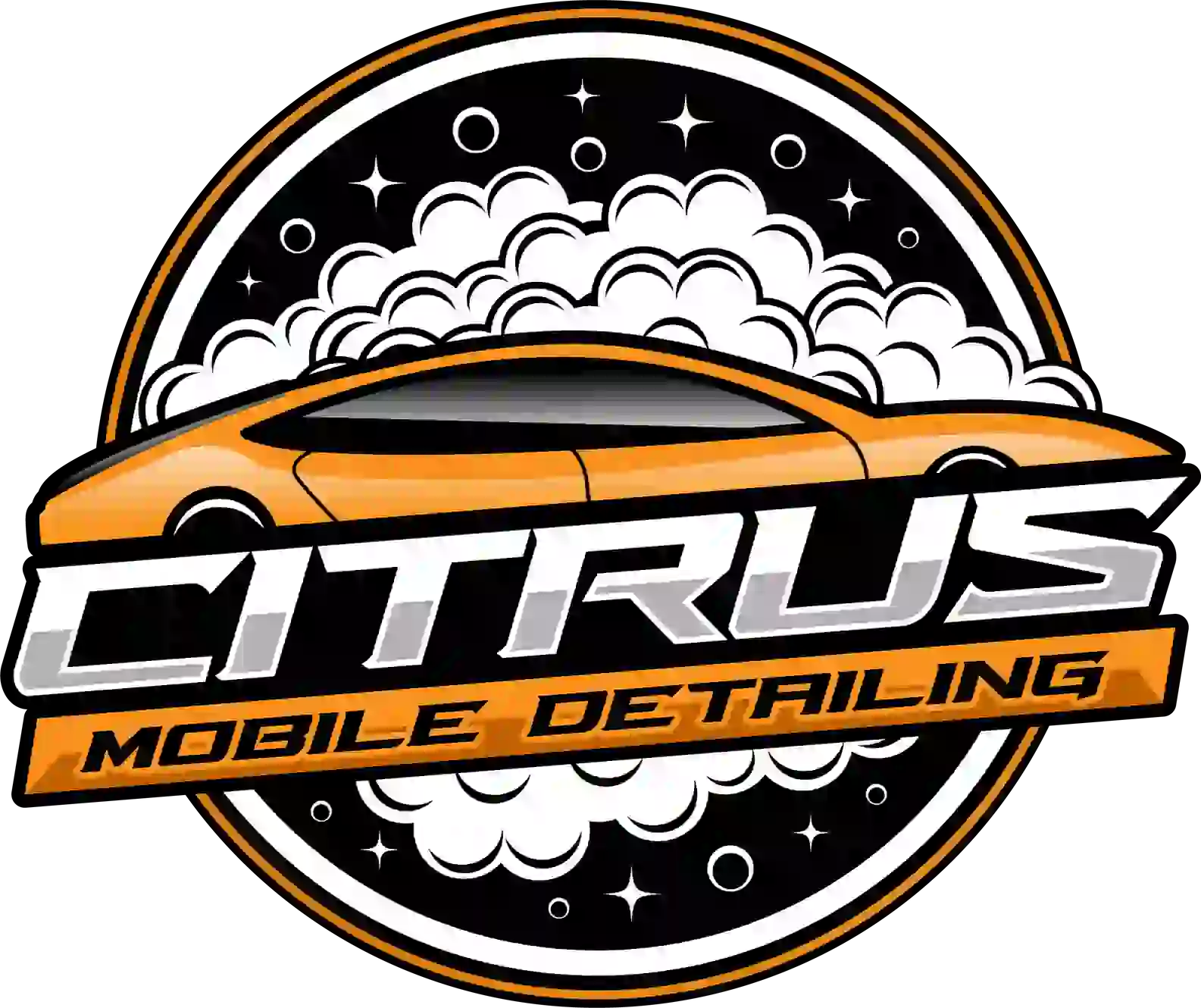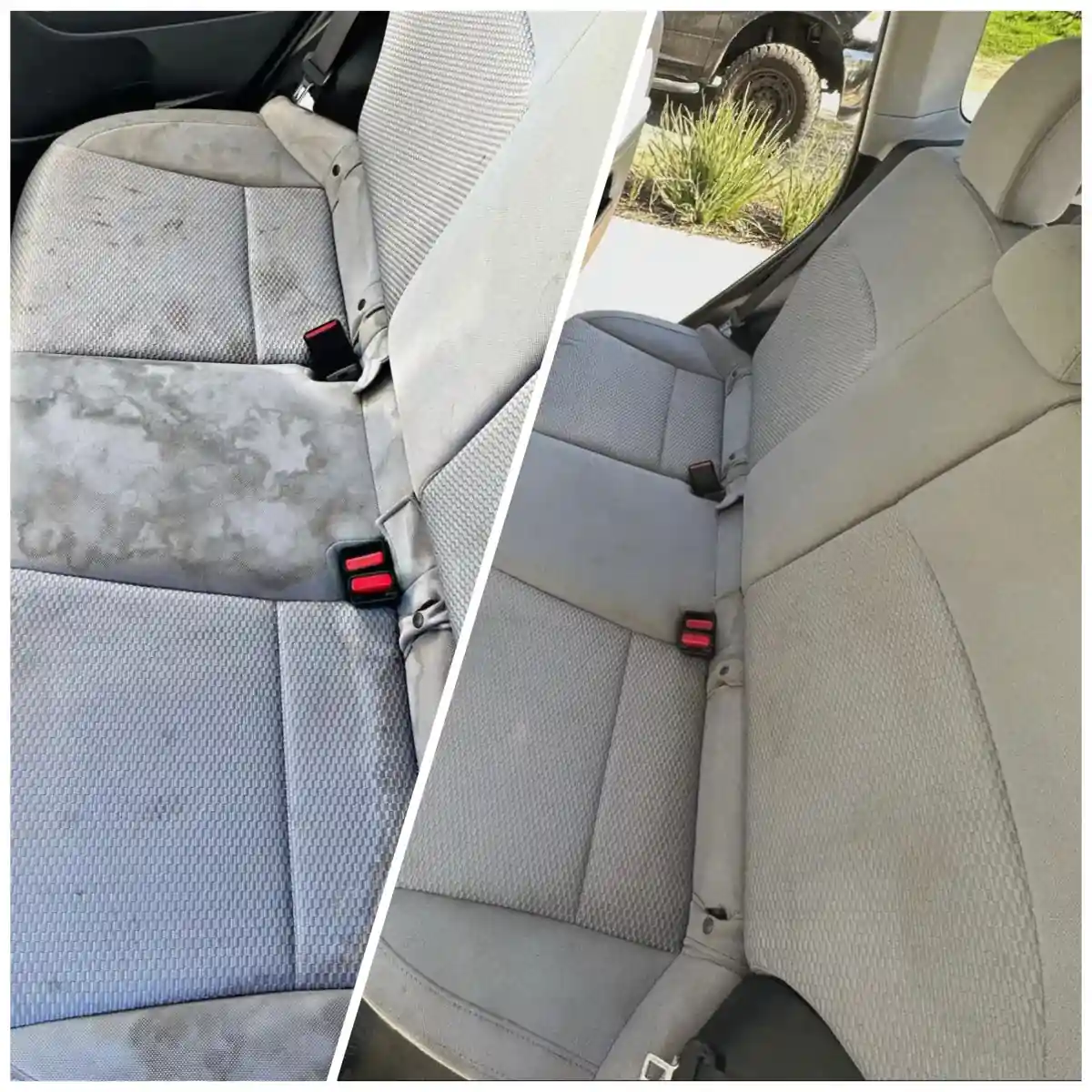Introduction to Exterior Detailing
Exterior detailing is a comprehensive approach to cleaning, restoring, and protecting the exterior of your vehicle. Unlike a basic car wash, which might only address surface-level dirt and grime, exterior detailing involves meticulous attention to every part of your car’s exterior. This includes the paint, windows, wheels, tires, and even the trim. Specialized tools and products are employed to achieve a level of cleanliness and polish that standard washing simply cannot provide.
At its core, exterior detailing is about maintaining both the aesthetic appeal and the structural integrity of your vehicle. The process typically includes several key steps: washing, claying, polishing, and sealing or waxing. Each of these steps serves a unique purpose and collectively ensures that your vehicle remains in top condition. Washing removes loose dirt and contaminants from the surface, while claying eliminates bonded contaminants that washing alone cannot address. Polishing then restores the paint’s clarity and shine, and sealing or waxing provides a protective layer against environmental elements.
One of the primary benefits of exterior detailing is that it can significantly extend the lifespan of your vehicle’s exterior components. By regularly removing contaminants that can cause damage over time, detailing helps prevent issues such as rust, corrosion, and paint oxidation. Additionally, the protective coatings applied during the detailing process act as a barrier against harmful UV rays, acid rain, bird droppings, and other environmental hazards.
Moreover, exterior detailing is not merely about cleanliness but also about enhancing the overall visual appeal of your vehicle. A well-detailed car stands out with its glossy finish and meticulously cleaned components. This not only increases the vehicle’s resale value but also provides a sense of pride and satisfaction for the owner. By investing in regular exterior detailing, car owners can ensure that their vehicles remain in pristine condition, both aesthetically and structurally, for years to come.
Benefits of Regular Exterior Detailing
Regular exterior detailing offers a comprehensive suite of benefits that extend beyond mere aesthetics. One of the most immediate advantages is the enhancement of the vehicle’s appearance. A meticulously detailed car gleams with a showroom-like finish, catching the eye and reflecting the owner’s dedication to maintaining their investment. This visual appeal is not just superficial; it plays a crucial role in preserving the paint job. The application of waxes, sealants, and protective coatings shields the paint from harmful UV rays, bird droppings, tree sap, and other environmental contaminants that can cause fading, etching, and discoloration over time.
Another significant benefit of regular exterior detailing is the prevention of rust and corrosion. Road salt, pollutants, and moisture can wreak havoc on a vehicle’s metal surfaces, leading to unsightly and damaging rust spots. Detailing includes thorough cleaning and protective treatments that create a barrier against these corrosive elements, helping to maintain the structural integrity of the car. This proactive maintenance is essential for extending the lifespan of exterior components, such as trim, moldings, and chrome elements, which are all susceptible to wear and tear.
Moreover, a well-maintained exterior can significantly impact the vehicle’s resale value. Potential buyers are more inclined to pay a premium for a car that looks well-cared-for, seeing it as a sign of overall responsible ownership. This increased resale value can provide a substantial return on investment, especially when compared to the relatively modest cost of regular detailing services.
Finally, regular exterior detailing instills a sense of pride and satisfaction in the vehicle owner. Driving a clean, polished car can enhance the overall driving experience, making it more enjoyable and fulfilling. Knowing that the vehicle is in prime condition both visually and functionally brings peace of mind and deepens the connection between the owner and their vehicle.
The Role of Clay Bar Services
Clay bar services play a pivotal role in the exterior detailing process, ensuring a comprehensive cleanse that goes beyond what traditional washing can achieve. Utilizing a specialized clay bar, this technique targets and eradicates deeply embedded contaminants like brake dust, industrial fallout, and environmental pollutants. These particles often remain bonded to the vehicle’s surface despite regular washing, posing potential threats to the paintwork’s integrity. The clay bar’s unique formulation allows it to safely lift these impurities, restoring the car’s surface to a contaminant-free state.
One of the primary benefits of clay bar services is the restoration of smoothness to the vehicle’s paint. Over time, contaminants can cause the surface to feel rough and textured, detracting from the car’s appearance and potentially accelerating wear. By meticulously removing these particles, the clay bar rejuvenates the paint, leaving a sleek and polished finish. This smooth surface is not only visually appealing but also crucial for the subsequent steps in the detailing process.
Furthermore, the application of a clay bar significantly enhances the effectiveness of wax and sealants. When the paint is free of contaminants, these protective layers can bond more effectively, offering superior adherence and durability. This improved bonding ensures that wax and sealants provide a more robust shield against environmental factors, thereby extending the vehicle’s longevity and maintaining its pristine appearance for longer periods.
Incorporating clay bar services into regular detailing routines is essential for maintaining a vehicle’s exterior in optimal condition. By addressing the limitations of standard washes and providing a thorough decontamination, clay bars uphold the integrity and aesthetic appeal of the paintwork. As a result, vehicles not only look better but are also better protected against the myriad of elements they encounter daily.
Engine Bay Detailing: Aesthetic and Functional Benefits
Engine bay detailing is an often overlooked yet crucial aspect of vehicle maintenance. A clean engine bay not only enhances the overall appearance of the vehicle, making it look well-maintained and cared for, but also contributes significantly to the performance and longevity of engine components. The process involves several steps, starting with degreasing, followed by thorough cleaning, and finally dressing the engine bay to protect and enhance its look.
Degreasing is the initial step and is essential for removing oil, grime, and other contaminants that accumulate over time. These substances can cause corrosion and other damage if not regularly cleaned. Using a high-quality degreaser designed specifically for automotive use is critical, as household products can be too harsh and potentially damage sensitive engine parts. After applying the degreaser, it is important to allow it to sit for a few minutes to break down the contaminants before rinsing it off with a low-pressure hose to avoid harming any components.
The next step involves cleaning the engine bay thoroughly. This requires a combination of brushes and microfiber cloths to reach all the nooks and crannies. Special attention should be paid to areas where dirt and grime are most likely to accumulate, such as around gaskets and seals. Using a pH-balanced cleaner will ensure that the cleaning process is effective without causing any harm to the engine bay materials.
Finally, dressing the engine bay not only restores its shine but also adds a layer of protection against future grime and corrosion. Engine dressing products are specifically formulated to condition and protect plastic, rubber, and metal components. Applying these products carefully will ensure that the engine bay looks pristine and is protected from the elements.
In summary, engine bay detailing is more than just an aesthetic enhancement; it is a functional necessity that can prevent long-term damage and improve the performance and longevity of your vehicle’s engine components. Using the right products and techniques is key to achieving optimal results without risking damage to sensitive parts.
Iron and Fallout Removal Services
Iron and fallout removal services play a crucial role in exterior detailing, addressing some of the most pervasive and damaging contaminants that can affect a vehicle’s appearance and structural integrity. Iron particles, often originating from brake pads, and industrial fallout, which includes pollutants from factories and other industrial activities, can become embedded in the paintwork of a vehicle. These contaminants not only mar the aesthetic appeal but can also lead to serious issues such as rust and extensive paint damage if left untreated.
When these iron particles and fallout are left on the vehicle’s surface, they can oxidize and cause corrosion. This degradation not only diminishes the visual appeal of the car but also compromises the protective layers of the paint, making the vehicle more susceptible to further damage. Regular washing and standard detailing techniques are often insufficient to fully remove these stubborn contaminants, necessitating specialized iron and fallout removal services.
The process of removing iron particles and fallout involves the use of specific products and techniques designed to safely and effectively eliminate these contaminants without causing harm to the vehicle’s paint. Typically, a specialized iron remover is applied to the exterior surfaces of the car. This product reacts with the iron particles, dissolving them and allowing them to be rinsed away easily. The use of fallout removers can also neutralize and lift other industrial pollutants that adhere to the paintwork.
These products are formulated to be safe for all types of paint finishes, ensuring that the underlying surfaces remain intact and undamaged. Additionally, professional detailing services often incorporate clay bar treatments to further remove any remaining particulates that may cling to the paint after the initial chemical treatment. This comprehensive approach ensures that the exterior is thoroughly cleansed and decontaminated.
Engaging in regular iron and fallout removal services offers significant long-term benefits. By maintaining a clean and contaminant-free exterior, vehicle owners can prevent the onset of rust and paint deterioration, thereby extending the lifespan and preserving the resale value of their vehicles. Furthermore, a meticulously maintained exterior enhances the overall aesthetic appeal, making the vehicle look as good as new.
The Process of a Professional Exterior Detailing Service
When you opt for a professional exterior detailing service, you are investing in a comprehensive and meticulous process that goes beyond a standard car wash. The journey begins with an initial inspection, where experienced detailers assess the condition of your vehicle’s exterior. This step allows them to identify any specific areas that require extra attention, such as scratches, swirl marks, or oxidation.
The detailing process truly starts with a thorough washing to remove surface dirt, grime, and contaminants. Professionals use high-quality, pH-balanced shampoos and specialized tools to ensure no damage is caused to the paintwork. Following the wash, a clay bar treatment is applied to eliminate embedded contaminants that washing alone cannot remove. This step is crucial for achieving a smooth, contaminant-free surface, which is essential for the subsequent steps.
Polishing is the next phase, aimed at restoring the paint’s clarity and gloss. Skilled detailers use machine polishers and a range of polishes to remove imperfections like minor scratches and swirl marks. This step requires precision and expertise, as improper polishing can lead to further damage. Once the surface is polished, it is ready for the application of wax or sealant.
Waxing and sealing are integral for protecting the vehicle’s paint from environmental elements such as UV rays, rain, and pollutants. High-quality waxes and sealants are meticulously applied to create a protective layer that enhances the vehicle’s shine and shields it from damage. While wax provides a deep, glossy finish, sealants offer longer-lasting protection, often preferred for their durability.
The entire process underscores the thoroughness and precision that professional detailers bring to the table. Their expertise, coupled with the use of premium products and equipment, results in a level of finish and protection that is difficult to achieve with DIY methods. By entrusting your vehicle to professionals, you ensure its appearance and longevity are significantly enhanced.
DIY vs. Professional Exterior Detailing: Pros and Cons
When it comes to exterior detailing, enthusiasts and car owners often grapple with the choice between DIY and professional services. Each approach has its advantages and disadvantages, influenced by factors such as cost, time, equipment, and expertise. Understanding these aspects can guide you in making an informed decision tailored to your specific needs.
One of the main advantages of DIY exterior detailing is cost savings. By handling the detailing yourself, you can avoid the labor fees associated with professional services. This option is particularly appealing if you already own basic detailing supplies, such as car wash soap, wax, and microfiber towels. Additionally, DIY detailing gives you the flexibility to work at your own pace and focus on areas that need the most attention.
However, DIY detailing has its limitations. Achieving professional-level results often requires specialized equipment and products that may not be readily available to the average car owner. For instance, tasks like clay bar treatment, engine bay detailing, and iron removal demand advanced techniques and tools that go beyond standard DIY capabilities. Without the proper expertise, you risk causing damage to your vehicle’s exterior, potentially leading to costly repairs.
On the other hand, professional exterior detailing services come with the benefit of expert knowledge and high-quality equipment. Professionals are trained to handle complex detailing tasks with precision, ensuring that your vehicle receives the best care possible. They use specialized products and tools designed to deliver superior results, which can significantly enhance your vehicle’s appearance and longevity. Moreover, professional detailing services save you time and effort, allowing you to focus on other priorities while your car is meticulously cared for.
Despite the apparent benefits, professional detailing services can be expensive, especially for comprehensive packages. The cost may deter some car owners from seeking professional help regularly. However, for intricate detailing tasks such as clay bar treatment, engine bay detailing, and iron removal, professional services are often the most reliable option. These tasks require a level of expertise and precision that is difficult to achieve through DIY methods.
In conclusion, the choice between DIY and professional exterior detailing depends on your specific needs and resources. For routine maintenance and minor detailing tasks, DIY can be a cost-effective and convenient option. However, for complex tasks requiring specialized knowledge and equipment, professional detailing services are highly recommended to ensure optimal results and prevent potential damage to your vehicle.
Maintaining Your Vehicle’s Exterior Between Detailings
Regular maintenance of your vehicle’s exterior is crucial in preserving its appearance and protecting it from the elements between professional detailing sessions. One of the most effective ways to achieve this is through regular washing. It is recommended to wash your vehicle at least once every two weeks to remove dirt, grime, and other contaminants that can damage the paint. Utilize a high-quality car shampoo and a microfiber wash mitt to ensure a gentle and thorough clean without causing scratches.
In addition to regular washing, using the right products is essential. Opt for pH-balanced cleaners and avoid household detergents, as they can strip away protective wax and sealants. After washing, it is beneficial to apply a layer of wax or a paint sealant. These products serve as a barrier against environmental pollutants, UV rays, and moisture, thereby extending the life of your vehicle’s paint and enhancing its shine. Reapplying wax or sealant every three to four months can significantly improve your vehicle’s appearance and longevity.
Addressing new contaminants promptly is another key aspect of maintaining your vehicle’s exterior. Bird droppings, tree sap, and bug splatter are not only unsightly but also highly acidic, causing potential damage to the paint if left unchecked. Carrying a quick detailer spray and a microfiber cloth in your vehicle allows you to tackle these contaminants as soon as they appear, preventing long-term harm.
While exterior cleanliness is often the focus, keeping the engine bay clean is equally important. A clean engine bay not only looks better but also helps in identifying potential issues such as leaks or worn-out components. Use a degreaser and a soft brush to remove dirt and grime from the engine area, followed by a rinse with low-pressure water. Ensure all electrical components are covered to avoid water damage.
Lastly, maintaining the smoothness of your vehicle’s paint is vital. Over time, contaminants can embed themselves in the paint surface, leading to a rough texture. Utilizing a clay bar treatment can effectively remove these impurities, restoring the smoothness and preparing the surface for wax or sealant application. By following these practical tips, you can ensure your vehicle continues to look its best and remains protected from the harsh elements.



